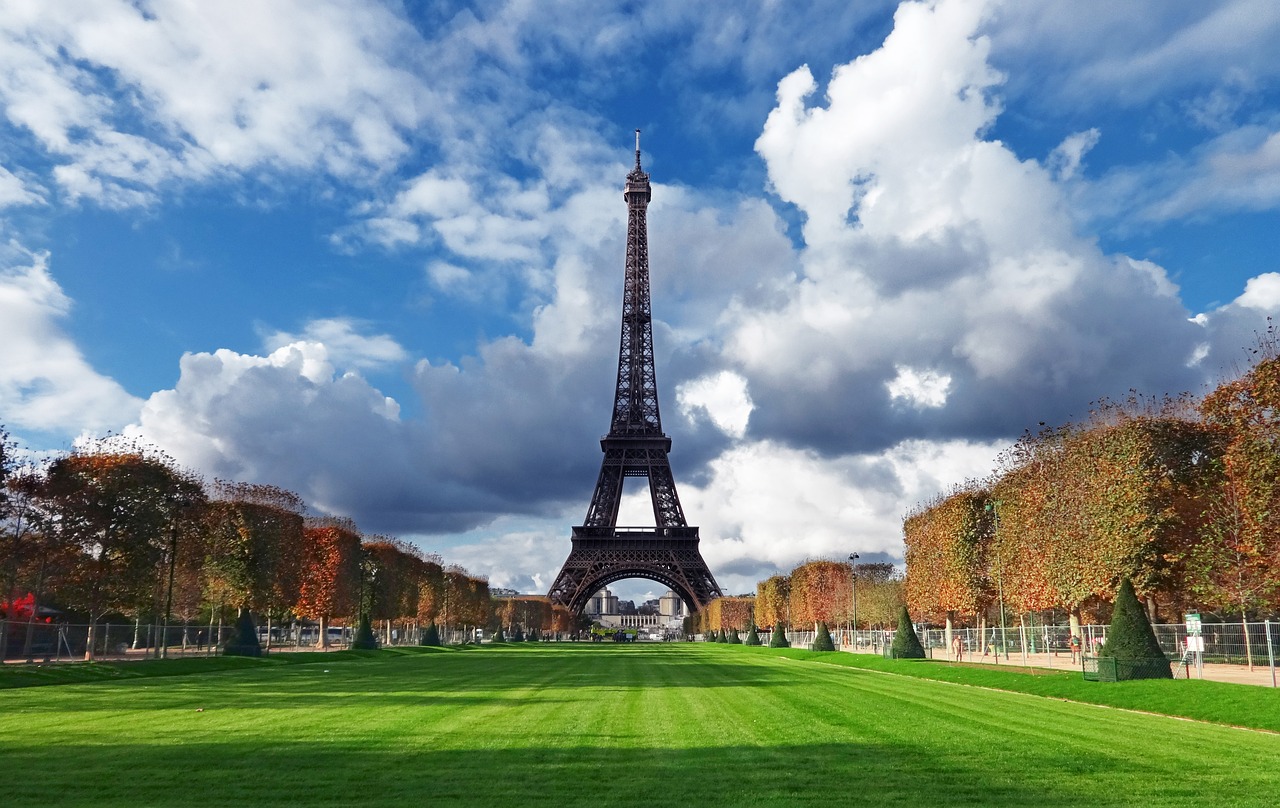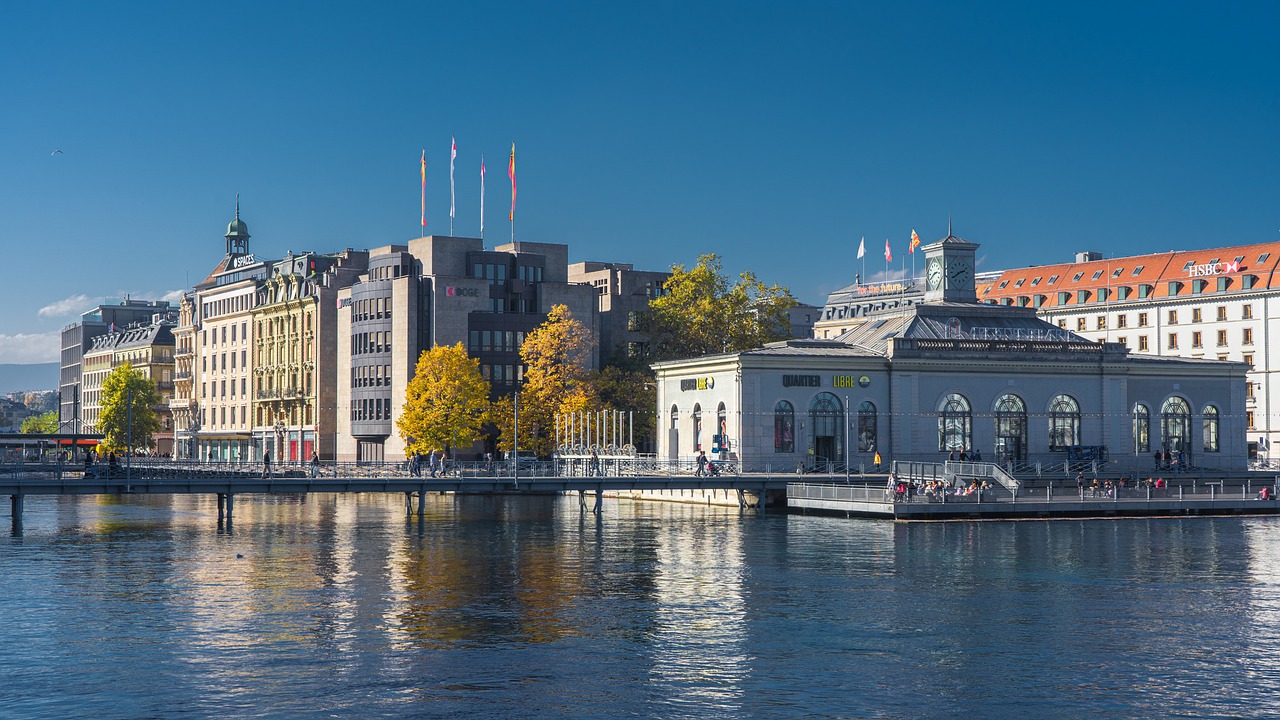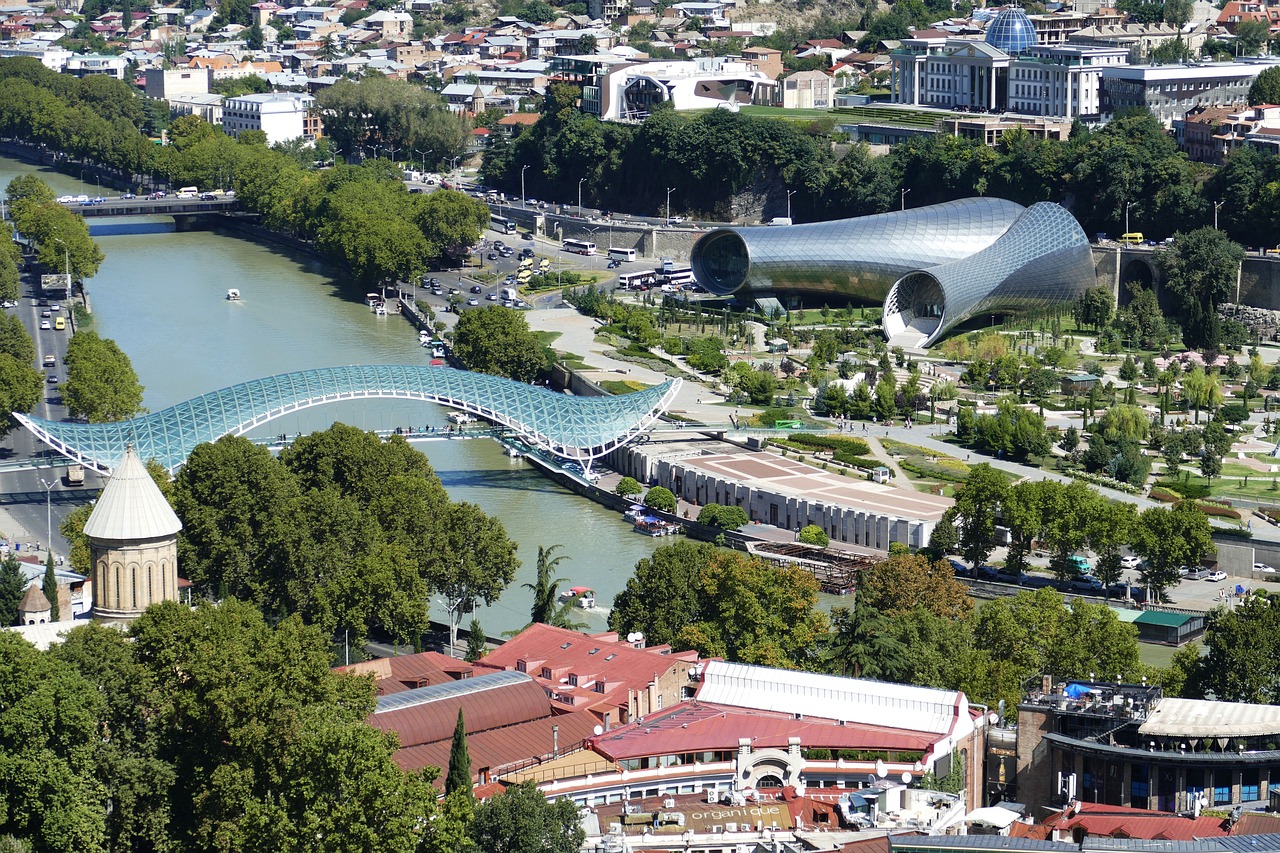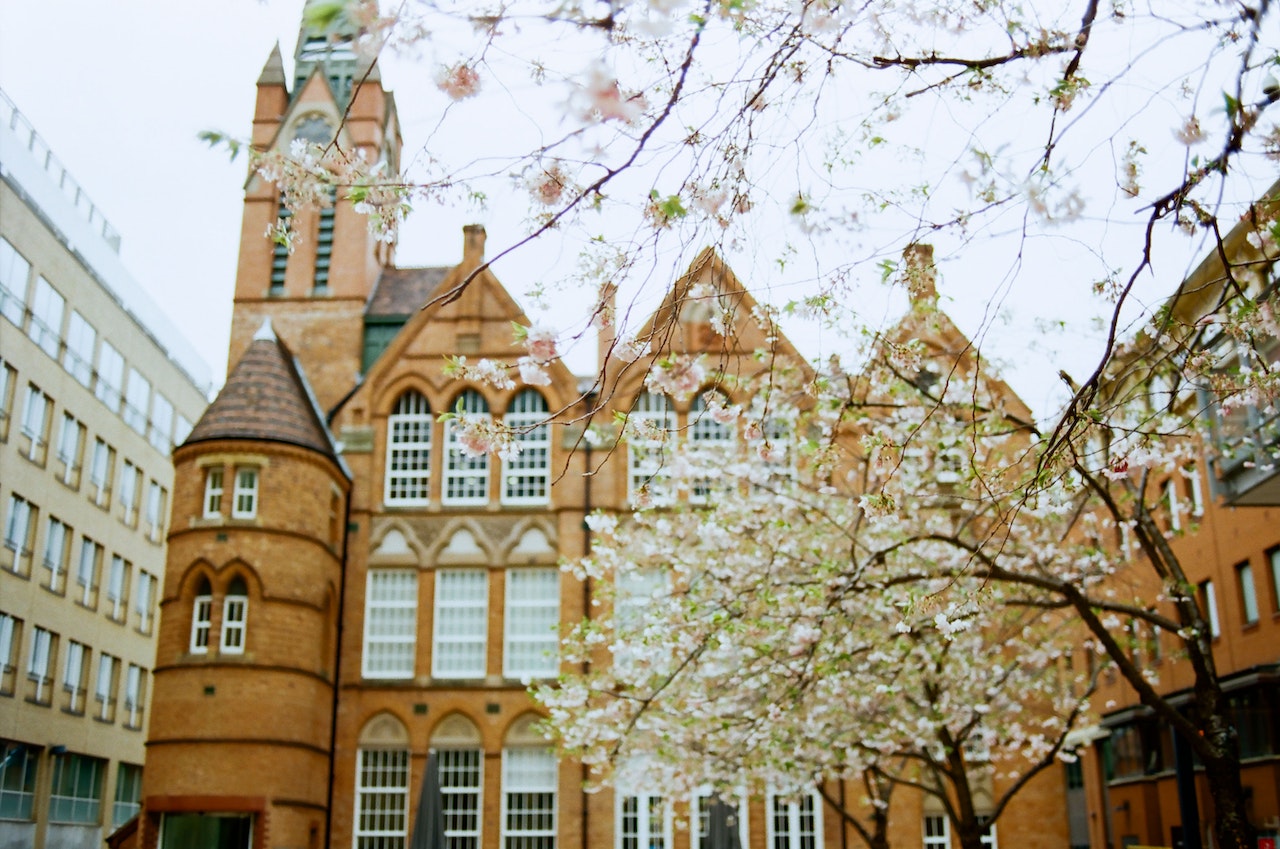Paris is the capital city of France, located in the northern-central part of the country. It is situated on the banks of the River Seine and is known for its rich history, art, culture, fashion, and cuisine. Paris is one of the most popular tourist destinations in the world, attracting millions of visitors each year to its iconic landmarks such as the Eiffel Tower, the Louvre Museum, Notre-Dame Cathedral, the Champs-Élysées, and many others. The city has a population of over 2 million people and is also a major center for business, education, and research.
Short History
Paris has a long and rich history that dates back to the third century BC when it was originally settled by the Celtic people. The city was named “Lutetia” by the Romans when they conquered the area in the first century BC.
Over the centuries, Paris grew in importance and became a major center of culture and trade in medieval Europe. During the Renaissance, the city flourished with the construction of grand palaces, churches, and other buildings.
In the late 18th century, Paris played a key role in the French Revolution, which led to the overthrow of the monarchy and the establishment of a republic. During the 19th century, Paris underwent extensive urban renewal and expansion, becoming the center of a vast empire that stretched across the globe.
In the 20th century, Paris was occupied by German forces during World War II, but it was liberated in 1944 and played a key role in the rebuilding of Europe in the post-war period. Today, Paris remains one of the most important cities in the world, known for its art, culture, architecture, and cuisine.
Below there are just a few exciting examples of the many things that Paris has to offer, and there is much more to explore and discover throughout the city.
Architecture
The architecture of Paris is known for its elegance, sophistication, and diversity, with a wide range of styles. Here are some of the most notable architectural styles in Paris:
- Gothic: Many of Paris’s most iconic buildings, such as Notre-Dame Cathedral and Sainte-Chapelle, are in the Gothic style. Gothic architecture is characterized by its pointed arches, ribbed vaults, and intricate stonework.
- Baroque: The Baroque style was popular in Paris during the 17th and 18th centuries and is characterized by its ornate decoration, dramatic curves, and rich colors. Examples of Baroque architecture in Paris include the Palace of Versailles and the Church of Saint-Sulpice.
- Haussmannian: In the mid-19th century, Baron Haussmann led a massive renovation of Paris that transformed the city into its modern form. Haussmannian architecture is characterized by its uniformity, with wide boulevards, uniform building heights, and classical facades with ornate balconies and ironwork.
- Art Nouveau: The Art Nouveau style, popular in the late 19th and early 20th centuries, is characterized by its flowing lines, organic forms, and floral motifs. Examples of Art Nouveau architecture in Paris include the entrances to the Paris Métro and the Castel Béranger apartment building.
- Modern: In the 20th century, Paris embraced modern architecture, with buildings such as the Centre Pompidou and the Tour Montparnasse showcasing bold designs and innovative construction techniques. Today, Paris continues to be a hub of architectural experimentation and creativity, with new buildings pushing the boundaries of design and engineering.
Museums and Galleries
Paris is home to some of the most impressive museums and galleries in the world, showcasing a vast range of art, history, and culture. Here are some of the most interesting museums and galleries in Paris:
- The Louvre: The Louvre is one of the most famous museums in the world, known for its wide collection of art and artifacts from ancient civilizations to the present day. Its collection includes the Mona Lisa, the Winged Victory of Samothrace, and the Venus de Milo, among many others.
- Musée d’Orsay: Housed in a former train station, the Musée d’Orsay is known for its impressive collection of Impressionist and Post-Impressionist art, including works by Van Gogh, Monet, and Renoir.
- Centre Georges Pompidou: The Centre Pompidou is a modern art museum and cultural center known for its bold, high-tech architecture and extensive collection of contemporary art.
- Musée de l’Orangerie: The Musée de l’Orangerie is a smaller museum known for its collection of Impressionist and Post-Impressionist art, including Monet’s famous Water Lilies series.
- Musée Rodin: The Musée Rodin is dedicated to the works of the sculptor Auguste Rodin, with a collection that includes many of his most famous pieces, such as The Thinker and The Kiss.
- Musée du Quai Branly – Jacques Chirac: This museum showcases the art and artifacts of non-European cultures, with a collection that includes objects from Africa, Asia, Oceania, and the Americas.
- The Picasso Museum: This museum is devoted to the works of Pablo Picasso and features a collection of over 5,000 of his paintings, drawings, sculptures, and prints.
Landmarks and Monuments
Paris is known for its many iconic landmarks and monuments that attract millions of visitors each year. Here are some of the most interesting landmarks and monuments in Paris:
- The Eiffel Tower: The Eiffel Tower is perhaps the most famous landmark in Paris, known for its iconic silhouette and stunning views of the city from its observation decks.
- Notre-Dame Cathedral: This Gothic cathedral is one of the most famous landmarks in Paris, known for its beautiful stained glass windows, soaring arches, and intricate carvings.
- Arc de Triomphe: This triumphal arch stands at the end of the Champs-Élysées and commemorates the victories of Napoleon’s army. It is also home to the Tomb of the Unknown Soldier, which honors French soldiers who died in World War I.
- Champs-Élysées: This tree-lined avenue is one of the most famous streets in the world, known for its luxury shops, cafes, and theaters.
- Sacré-Cœur Basilica: This beautiful white church sits atop a hill in the Montmartre neighborhood and offers stunning views of the city from its steps.
- Place de la Concorde: This historic square is known for its Egyptian obelisk and beautiful fountains, and has played an important role in French history, including the French Revolution.
- Palace of Versailles: This opulent palace was the home of the French monarchy and is known for its stunning gardens, Hall of Mirrors, and ornate decorations.
Parks and Green Spaces
Despite being a bustling and urban city, Paris is also home to many beautiful parks and green spaces that offer a welcome respite from the hustle and bustle of city life. Here are some of the most notable parks and green spaces in Paris:
- Jardin du Luxembourg: This formal French garden is located in the heart of the city and features neatly manicured lawns, fountains, and sculptures, as well as a large pond where visitors can rent small sailboats.
- Bois de Vincennes: This sprawling park on the outskirts of the city is home to lakes, forests, and walking trails, as well as attractions such as the Château de Vincennes and the Parc Floral.
- Parc des Buttes-Chaumont: This park is known for its dramatic cliffs, waterfalls, and suspension bridge, as well as its many walking trails and picnic areas.
- Jardin des Tuileries: This park is located in the heart of the city and offers stunning views of the Louvre and the Place de la Concorde, as well as beautiful sculptures, fountains, and flower gardens.
- Parc de la Villette: This modern park is home to many cultural and artistic institutions, including the Cité des Sciences et de l’Industrie and the Philharmonie de Paris, as well as open-air performance spaces and walking paths.
- Parc Monceau: This small but beautiful park is located in the 8th arrondissement and features a rotunda, a pond, and several beautiful sculptures and monuments.
Beaches
Paris is a landlocked city and does not have any beaches nearby. The nearest beaches are located along the coast of Normandy, which is about a two-hour drive from Paris. Some of the popular beaches in Normandy include Deauville, Trouville, and Cabourg. Alternatively, there are several man-made beaches along the Seine River in Paris, such as Paris Plages, which are set up during the summer months. These artificial beaches offer a range of activities and events, such as sandcastle building, sunbathing, and outdoor concerts.
Shopping Districts
Paris is known as a global fashion capital, and there are numerous shopping districts throughout the city where you can find designer clothing, luxury goods, and unique souvenirs. Here are some of the most popular shopping districts in Paris:
- Champs-Élysées: This iconic avenue is lined with luxury boutiques, designer shops, and flagship stores from many of the world’s most famous fashion houses.
- Le Marais: This historic neighborhood is known for its trendy shops and boutiques, as well as its many cafes and art galleries.
- Rue Saint-Honoré: This street is home to some of the most exclusive and high-end fashion brands in the world, including Chanel, Dior, and Hermès.
- Galeries Lafayette: This grand department store is a Parisian institution and features a wide range of high-end brands and luxury goods, as well as stunning architecture and a beautiful rooftop terrace.
- Boulevard Haussmann: This wide boulevard is home to several iconic department stores, including Galeries Lafayette and Printemps, as well as numerous luxury boutiques and high-end shops.
- Rue de Rivoli: This bustling street is known for its mix of high-end fashion boutiques and more affordable shops, as well as its proximity to many popular tourist attractions, such as the Louvre and the Tuileries Gardens.
Food and Drink
Paris is known for its delicious cuisine, from classic French dishes to international flavors. Here are some of the most iconic foods to try in Paris:
- Croissants: This iconic French pastry is a must-try when visiting Paris, with its buttery, flaky layers and delicate texture.
- Baguettes: Paris is known for its delicious bread, and a fresh, crusty baguette is a staple of French cuisine.
- Cheese: France is known for its many varieties of cheese, and Paris is the perfect place to sample a range of flavors and textures, from creamy brie to tangy goat cheese.
- Macarons: These delicate and colorful French cookies are a popular dessert in Paris, with a range of flavors such as raspberry, chocolate, and pistachio.
- Crème brûlée: This classic French dessert features a creamy custard topped with a layer of caramelized sugar, and is a must-try for those with a sweet tooth.
- Steak frites: This classic French dish features a juicy steak served with crispy French fries, and is a hearty and satisfying meal.
- Escargots: These snails are a traditional French delicacy and are often served in a garlic butter sauce.
- Ratatouille: This classic Provençal dish features a mix of vegetables, including tomatoes, eggplant, and zucchini, stewed with herbs and spices.
Transportation
Paris has a variety of transportation options for getting around the city. Here are some of the best ways to move around Paris:
- Métro: The Paris Métro is a fast, efficient, and affordable way to travel around the city. It consists of 16 lines and 302 stations, making it easy to reach most parts of the city. The Métro operates from around 5:30am to midnight, with extended hours on Fridays and Saturdays.
- Bus: Paris has an extensive bus network that covers the entire city, including many areas that aren’t served by the Métro. The buses operate from around 6am to midnight, and there are also some night buses that operate during the early morning hours.
- RER: The Réseau Express Régional (RER) is a commuter rail network that connects Paris to its suburbs. It’s a fast and convenient way to travel between the city center and the outskirts of Paris.
- Bike: Paris has a popular bike-sharing program called Vélib’, which allows you to rent bikes from stations throughout the city. There are also many bike lanes and dedicated bike paths in Paris, making it easy and safe to cycle around the city.
- Walk: Paris is a great city for walking, with many beautiful neighborhoods, parks, and landmarks to explore on foot. Walking is also a great way to discover hidden gems and off-the-beaten-path attractions that you might not find otherwise.
- Taxi/Uber: Taxis and ride-sharing services like Uber are widely available in Paris, but they can be more expensive than other forms of transportation. Taxis can be hailed on the street or found at designated taxi stands throughout the city.
Safety
Paris is generally a safe city, but like any large urban area, it’s important to take precautions to ensure your safety, especially in crowded tourist areas or at night. Here are some tips for staying safe in Paris:
- Be aware of your surroundings: Pay attention to your surroundings, especially in crowded tourist areas, and keep an eye out for any suspicious activity or individuals.
- Keep your valuables secure: Keep your valuables, such as your passport, wallet, and phone, in a secure place and be aware of pickpockets in crowded areas.
- Use official taxis: Use official taxis or ride-sharing services to avoid scams and ensure your safety.
- Be cautious at night: Avoid walking alone in unfamiliar or poorly lit areas at night, and use well-lit and busy streets when possible.
- Follow local laws and customs: Be aware of local laws and customs, such as rules around drinking in public, and avoid any behavior that could draw unwanted attention.
Expensive or Cheap
Paris can be an expensive city, especially compared to other destinations in France or Europe. However, the cost of living in Paris can vary depending on your budget and lifestyle. Here are some factors that can affect the cost of living in Paris:
- Accommodation: The cost of accommodation in Paris can be quite high, especially if you’re looking for a central location or a larger space. However, there are also more affordable options, such as budget hotels, hostels, or vacation rentals.
- Food and drink: Eating out in Paris can be expensive, especially at high-end restaurants. However, there are also many affordable options, such as street food, cafes, and local markets. Additionally, buying groceries and cooking at home can be a more cost-effective option.
- Transportation: Public transportation in Paris is relatively affordable, especially if you purchase a multi-day pass. However, taking taxis or using ride-sharing services can be more expensive.
- Entertainment: Paris is home to many world-class museums, galleries, and attractions, many of which charge admission fees. However, there are also many free or low-cost activities, such as visiting public parks or exploring the city’s architecture and neighborhoods.
Overall, while Paris can be an expensive city, it’s possible to enjoy the city on a budget by being selective about your activities and expenses.
Best Time to Travel
The best time to travel to Paris depends on your personal preferences and what you want to do while you’re there. The most popular times to visit are during the summer months from June to August when the weather is warm and sunny, and there are many outdoor activities and events. However, this is also the busiest time of year, and you can expect crowds and high prices.
Alternatively, spring (March to May) and autumn (September to November) can also be great times to visit. The crowds are smaller, and the weather is mild, making it easier to explore the city’s many attractions without the summer heat. Plus, there are often festivals and events happening during these months, such as the Fête de la Musique in June and the Salon du Chocolat in October.
Winter can be a magical time to visit Paris, especially during the holiday season when the city is beautifully decorated with lights and festive cheer. However, the weather can be cold and rainy, so be sure to pack accordingly. Overall, the best time to travel to Paris is subjective and depends on your individual preferences, budget, and schedule.
Date Ideas, Activities or Experiences
Paris is a romantic city with many options and charming spots that make perfect date ideas. Here are some suggestions:
- Take a romantic stroll: Paris is a beautiful city with many charming streets and neighborhoods. Take a romantic stroll along the Seine River, explore the hidden alleys of Montmartre, or enjoy the colorful flower beds in the Luxembourg Gardens.
- Visit the Eiffel Tower: The Eiffel Tower is a must-see attraction in Paris and is especially beautiful at sunset or at night when it’s lit up. You can also climb to the top for a breathtaking view of the city.
- Enjoy a picnic: Paris has many beautiful parks and gardens that are perfect for a romantic picnic. Pick up some cheese, bread, and wine at a local market and enjoy a leisurely afternoon in the park.
- Take a boat ride: Explore the city from a different perspective by taking a boat ride on the Seine River. You can choose from a variety of options, including dinner cruises or sunset tours.
- Visit a museum: Paris is home to some of the world’s best museums, including the Louvre, Musée d’Orsay, and Centre Pompidou. Spend an afternoon exploring the art and history of Paris with your date.
- Try local cuisine: Paris is known for its food, so why not try some of the local specialties? Head to a traditional bistro for steak frites or escargots, or try a trendy new restaurant for a modern twist on French cuisine.
Fun and Interesting Facts
In addition to its majesty and gloss, Paris is also home to many fun and interesting facts that visitors may find surprising. Here are some fun and fascinating facts about Paris:
- Paris is known as the City of Lights, not because of its electric lights, but because it was a center of education and ideas during the Age of Enlightenment.
- The Eiffel Tower was originally built as a temporary structure for the 1889 World’s Fair, but it was so popular that it was allowed to remain standing.
- Paris is home to the world’s largest wine cellar, which holds over 2 million bottles of wine.
- The iconic Notre-Dame Cathedral was under construction for over 200 years, from 1163 to 1345.
- The Louvre Museum in Paris is the world’s most visited art museum, with over 10 million visitors per year.
- The Paris Catacombs are an underground network of tunnels and chambers that hold the remains of over 6 million people.
- The Champs-Élysées, one of the most famous streets in Paris, was originally a field of crops.
- The Paris Métro system is one of the oldest in the world and has over 300 stations.
- The Mona Lisa, one of the most famous paintings in the world, is housed at the Louvre Museum in Paris.
- Paris has a law that all buildings must be painted in shades of cream, white, or beige, unless they receive special permission to use a different color.
Conclusion
Paris, also known as the City of Light, is a stunning and iconic destination that is renowned for its colorful history, culture, and architecture. With its world-famous landmarks, museums, and galleries, Paris offers visitors a unique and unforgettable experience. From the stunning Eiffel Tower to the magnificent Louvre Museum, Paris is a city that is steeped in history, art, and culture. Its streets are lined with charming cafes, shops, and restaurants, and the city is home to some of the world’s most famous fashion houses. While Paris may be best known for its grandeur and sophistication, it also offers a vibrant and dynamic atmosphere that is full of life and energy. Whether you’re interested in art, history, fashion, or simply exploring the city’s many attractions, Paris is a destination that is sure to captivate and inspire you, and there is always something new to discover.



